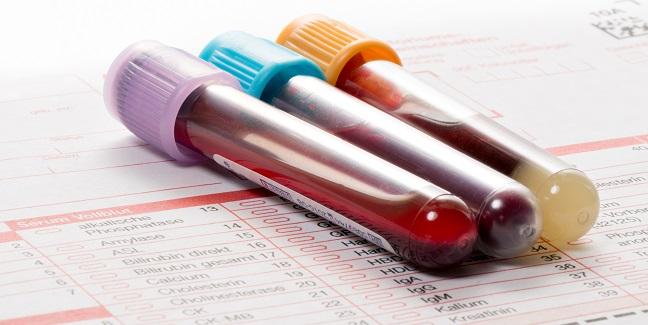Papers Confirm Rare Thrombocytopenia Link to AstraZeneca Vaccine
A definitive link between the ChAdOx1 nCoV-19 vaccine and these rare immune-induced events opens the door for tests and treatment.

One of the first papers to document the rare thrombotic events seen in Austria and Germany involving a form of thrombocytopenia after inoculation with the vaccine jointly developed by the University of Oxford and AstraZeneca has now been published in the New England Journal of Medicine, accompanied by a brief report confirming similar findings in a Norwegian cohort.
Taken together the papers show a clear link between this particular vaccine and the ”clotting abnormalities” that have led countries around the world to pause or revise their plans for the use of the Oxford/AstraZeneca product. Critically, say authors, the reports also point the way for definitive testing with widely available tests that would permit affected patients to be swiftly identified and treated, potentially averting serious thrombotic events.
The German/Austria analysis received wide media attention when it was first uploaded to a preprint server—and reported in TCTMD’s COVID-19 Daily Dispatch—and coined the term “vaccine-induced immune thrombotic thrombocytopenia” (VITT) for the rare adverse reaction, which resembles autoimmune heparin-induced thrombocytopenia (HIT), being seen among patients treated with the Oxford/AstraZeneca vaccine known as ChAdOx1 nCoV-19.
In the paper, Andreas Greinacher, MD (Universitätsmedizin Greifswald, Germany), and colleagues detail the clinical and laboratory features among 11 patients in Austria and Germany who developed thrombosis/thrombocytopenia after ChAdOx1 nCoV-19 vaccination as well as test results for 28 blood samples from additional patients referred for possible vaccine-associated thrombotic events. Of the 11 original subjects, nine were women ranging in age from 22 to 49. In all, nine out of 11 had cerebral venous thrombosis, three had splanchnic-vein thrombosis, three had pulmonary embolism, and four had other thromboses; six patients died. In the additional 28 patients referred for testing, all tested positive for platelet factor 4 (PF4)-heparin antibodies on ELISA assay, none of whom had been treated with heparin.
The paper goes on to propose a potential diagnostic and therapeutic strategy for managing patients who show a strongly positive ELISA result following vaccination, relying on nonheparin anticoagulation, most notably high-dose immune globulin.

Speaking with TCTMD, study co-author Theodore E. Warkentin, MD (McMaster University, Hamilton, Canada), stressed that the manuscript provides a definitive link between the vaccine and this rare disorder and, more importantly, a way to swiftly identify it and treat it. “We know how to test for it, and we know how to treat the condition through a combination of high-dose intravenous immunoglobulin and anticoagulation,” he said.
Asked whether this approach could have saved the lives of patients who died in their series, Warkentin said it’s impossible to know the answer. “When those cases happened, no one knew about the existence of this condition,” he said. “Now that we have both physicians and vaccine recipients aware of this rare potential complication, they can act on unexpected symptoms beginning 5 or more days after vaccination,” potentially allowing for timely treatment to prevent catastrophic events.
This particular vaccine has been used in 25% of vaccine recipients in Germany and in 30% of recipients in Austria, the paper notes. According the European Centre for Disease Prevention and Control’s vaccine tracker, 607,200 doses of the Oxford/AstraZeneca vaccine have been distributed in Austria and more than 5.5 million in Germany.
Norwegian Report
In the Norwegian report, investigators led by Nina H Schultz, MD, PhD (Oslo University Hospital, Norway), describe five cases out of an estimated 132,686 patients to have been vaccinated with a first dose of ChAdOx1 (and none received a second). All five patients (four women) were healthcare workers between the ages of 32 to 54; four had severe cerebral venous thrombosis with intracranial hemorrhage, which was fatal in three subjects. Four of the five patients had received low-molecular-weight heparin prior to blood sample collection.
“Although rare, VITT is a new phenomenon with devasting effects for otherwise healthy young adults and requires a thorough risk-benefit analysis," they conclude. “The findings of our study indicate that VITT may be more frequent than has been found in previous studies in which the safety of the ChAdOx1 nCoV-19 vaccine has been investigated.”
Like the authors of the accompanying paper, Schultz et al also conclude that their results, by providing a link between vaccination and this unusual immune response “strengthen the view” that vaccination was the trigger for this particular adverse response; also, the findings suggest that early intravenous treatment with immune globulin may be helpful, given its proven efficacy against spontaneous HIT. Physicians should have “a low threshold” for requesting ELISA testing” for PF4 antibodies when VITT is suspected.
Cardiology Messages
Discussing the new findings with TCTMD, Geoffrey Barnes, MD (University of Michigan, Ann Arbor), a member of the American College of Cardiology’s peripheral vascular disease section, called the publications “an important piece of information that clinicians need to be aware of in case they see these patients.”
VITT is “a rare occurrence,” he stressed, “but when it happens, it needs to be identified and treated very quickly.” The complication has only been seen with the Oxford/AstraZeneca vaccine, which is not approved in the United States, and even in the countries where it’s in use, this particular side effect has only very seldom been documented. “This is something that's happening in handfuls of people across tens of thousands to millions of doses of vaccine, but once it happens, we need to pick up on it quickly and we need to treat it,” Barnes said.
It also needs to be put in perspective, given the clotting risk documented with COVID-19 itself. “The risk of developing a clot if you're hospitalized from COVID-19 is much higher,” said Barnes. “We're talking on the order of maybe 5% to even 20%, depending on how ill you are, whereas this is something that's happening in tens of people, in a country where tens of thousands to millions have been vaccinated, so the risk of getting [VITT] is actually quite small.”
If clinicians suspect VITT, they need to speak with their hematology colleagues “right away,” Barnes urged. Moreover, “every hospital” has access to the ELISA essay needed to look for this particular reaction, he noted.
Interventional cardiologists, too, need to have a high index of suspicion, since the unusual clotting patterns seen are both venous and arterial. While cerebral and splanchnic-vein events dominated in the German/Austria report and cerebral, portal, and splenic veins in the Norwegian report, Barnes stressed that reports in the United Kingdom, where the vaccine has been used even more widely, include cases of arterial thrombotic events, in particular coronary artery thrombosis and intracardiac thrombosis. While arterial events are likely rare, for an already very rare syndrome, “this is something that, if an interventional cardiologist gets called for a STEMI and they see this thrombotic event, then this is something to think about it.”
Shelley Wood was the Editor-in-Chief of TCTMD and the Editorial Director at the Cardiovascular Research Foundation (CRF) from October 2015…
Read Full BioSources
Greinacher A, Thiele T, Warkentin TE, et al. Thrombotic thrombocytopenia after ChAdOx1 nCov-19 vaccination. N Engl J Med. 2021;Epub ahead of print.
Schultz NH, Sørvoll IH, Michelsen AE, et al. Thrombosis and thrombocytopenia after ChAdOx1 nCoV-19 Vaccination. N Engl J Med. 2021;Epub ahead of print.
Disclosures
- Greinacher reports grant funding from Deutsche Forschungsgemeinschaft related to the manuscript as well as personal, consulting, speakers, and travelling fees, along with grant funding from a range of companies outside of the current work.






Comments